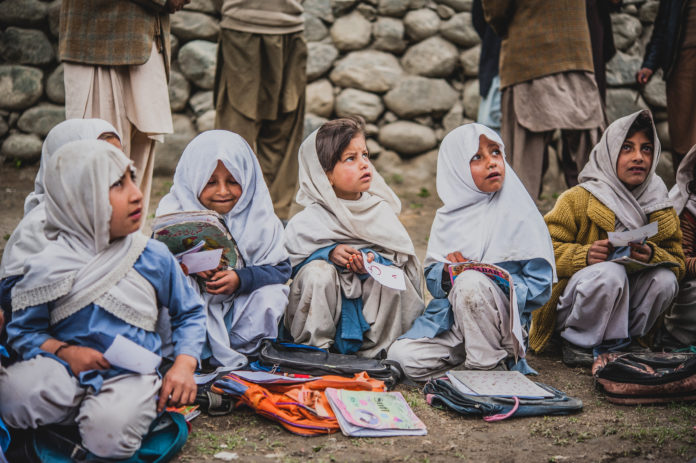The Ayaan Institute has warned that unless Muslim governments focus on the serious economic and development challenges they face, they won’t be able to feed their growing populations which will lead to mass unemployment, migration and social and political unrest.
In a new report analysing 12 Muslim nations, the think tank found that only Saudi Arabia and the United Arab Emirates have GDP per capita wealth on a par with/greater than Western countries – at $20,110 and $36,285 respectively.
On the other hand, in Nigeria, Egypt, Pakistan and Bangladesh between 24.3% and 40% of the population live below the poverty line.
The report also found that Saudi Arabia, the UAE and Pakistan have spent more as a percentage of GDP on their military than education.
And Turkey ($448 bn) and Nigeria ($412 bn) have the highest external debt among the 12 countries analysed (Iran and Bosnia had the lowest).
“The Muslim world is divided into 53 Muslim majority nation-states, seemingly powerless, permanently dependent on Europe, the United States, Russia, or China and unable to tread independent political and economic paths,” the report says.
“Central to achieving independence in the Muslim world is economic development, self-reliance, and mutual trade between Muslims, grounded in an Islamic ethical-spiritual economic framework.”
Subscribe to our newsletter and stay updated on the latest news and updates from around the Muslim world!
The Ayaan team analysed core data for 12 Muslim-majority countries. Whilst each country has a unique set of challenges and opportunies, they were able to idenfy some common issues and trends.
- Population growth: Currently the combined population of the 12 countries is 1.25 billion. By 2050, it is estimated to grow to 1.76 billion. Nigeria and Pakistan will witness the highest population growth and the greatest growth within the 12 countries is among the 0-39 age range. This creates several issues among the youth, such as unemployment, poverty, housing and marriage.
- Wealth and poverty: More than half of the GDP wealth can be found in two countries alone – Saudi Arabia and the United Arab Emirates. This is primarily due to the wealth from oil and the rapid development of these countries. These two countries provide much-needed employment opportunties for Muslims from poorer countries, even though employment/living conditions and wages may be exploitative.
- Literacy rates: The literacy rates in all countries, except two, were over 60% (Nigeria and Pakistan being exceptions). In Pakistan, the literacy rate was below 50% and the average length of education up to tertiary level was eight years, while for Nigeria it was nine years. Only Uzbekistan had a 100% literacy rate.
- Trade and dependency: The largest sector of the economies of all countries is the service sector, followed by manufacturing and agriculture. The Muslim countries examined have a dependency relationship with other countries for military equipment, petrol for transport and energy and motor vehicles. In particular, the main item of import for most of these countries is oil/refined petrol to meet energy needs. This not only creates a dependency on Saudi Arabia and UAE but also on the United States.
- Unemployment levels: Overall unemployment levels are high in some countries. However, the overall rates across all of them for youth unemployment are extremely high. In all the countries, unemployment for women actively seeking work is higher than for men.
- Foreign investment: Foreign investment in all countries is at low levels except for Indonesia and the UAE. The 12 Muslim countries are mostly the highest ranking in terms of perceptions of corruption and not so good on the “ease of doing business” scores. This also affects inward investment.
- External and public debt: Most Muslim countries have high levels of external debt in relation to their economic performance and ability to repay. Public debt (all internal debts) as a proportion of wealth created (GDP) is also very high across all countries. Egypt, Pakistan, and Malaysia all have extremely high levels of public debt, over 70% with Egypt at 90%.
- Military spending: Several countries have high levels of military spending as a proportion of GDP, with SaudiArabia, the UAE and Pakistan at the highest levels. Most of the countries have a dependency relationship on military spending with either China, the USA, Russia or a European country.
Ayaan concluded: “Although the presence of some of the multi-layered issues mentioned hinders growth and the economic development of these Muslim-majority countries, they are also blessed with an abundance of natural and population resources. They are also geographically placed in important geostrategic locaons, able to take advantage of trade with other Muslim and non- Muslim countries.
“Political stability, good governance and a focus on trade and economic development, coupled with prioritising independence and self-sufficiency, can turn the situation around with focus and careful planning, Insha’Allah.”
You can download the report here.






![The History of Sylhet and British Bangladeshis [Short Film]](https://5pillarsuk.com/wp-content/uploads/2024/11/IMG_3518-218x150.png)














